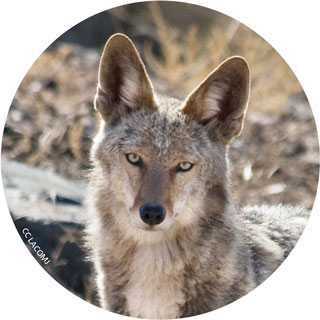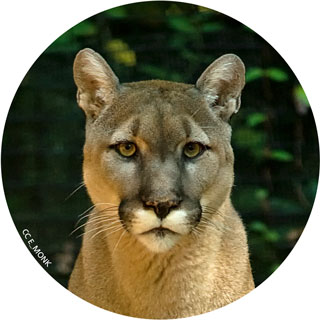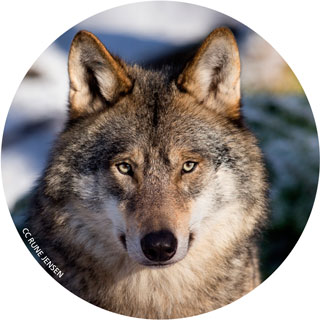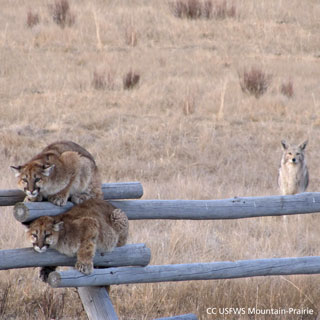
Here are some of the common mammalian carnivores of North America that people often encounter:
Bears are found on the continents of North America, South America, Europe, and Asia. In North America we have American black bears (which includes the Kermode or “spirit bear”), Brown Bears (including the Grizzly and Kodiak) and the Polar Bear.
Common characteristics of modern bears include large bodies with stocky legs, long snouts, shaggy hair,short tails and paws with claws that don’t retract. While the polar bear is mostly carnivorous, the other North American bears are omnivorous with varied diets. Bears are typically solitary animals with the exception of mothers with their young and courting individuals.
They are active during the day and night but may become nocturnal around humans. They have an excellent sense of smell and, despite their heavy build and awkward gait, are adept runners, climbers, and swimmers.
Bears use shelters, such as caves and burrows, as their dens; most species occupy their dens during the winter for a long period (up to 100 days) of sleep similar to hibernation.
Learn more about the American black bear here…
Photo: American Black Bear by UCUMARI PHOTOGRAPHY via Creative Commons
The bobcat (Lynx rufus) is an adaptable predator of the cat family Felidae that inhabits wooded areas, as well as semidesert, urban edge, forest edges, and swampland environments from southern Canada to northern Mexico, including most of the continental United States.
The bobcat is vital for controlling pest populations. With a gray to brown coat, whiskered face, and black-tufted ears, the bobcat is about twice as large as the domestic cat. It has distinctive black bars on its forelegs and a black-tipped, stubby tail, from which it derives its name.
Though the bobcat prefers rabbits and hares, it will hunt anything from insects, chickens, geese and other birds and small rodents to deer. Prey selection depends on location and habitat, season, and abundance. Like most cats, the bobcat is territorial and largely solitary, although with some overlap in home ranges.
Bobcats have been hunted extensively by humans, both for sport and fur, their population has proven resilient though declining in some areas.
Learn more about the bobcat here…
Photo: Bobcat by Wayne Dumbleton via Creative Commons
The coyote (Canis latrans) is a highly versatile species, whose range has expanded amidst human environmental modification.
Highly flexible in social organization, coyotes live either in nuclear families or in loosely-knit packs of unrelated individuals. They have a varied diet consisting primarily of animal matter, including deer, rabbits and hares, rodents, birds, reptiles, amphibians, fish and invertebrates, though it may also eat fruit and vegetables.
The coyote is a very vocal animal, earning it the nickname “song dog” and it is a prominent character in Native American folklore, usually depicted as a trickster who alternately assumes the form of an actual coyote or a man. As with other trickster figures, the coyote acts as a picaresque hero which rebels against social convention through deception and humor. The animal was especially respected in Mesoamerican cosmology as a symbol of military might.
After the European colonization of the Americas, the coyote was reviled in Anglo-American culture as a pest animal and cultural attitudes towards the coyote remain largely negative.
Learn more about the coyote here…
Photo: Coyote by lacomj via Creative Commons
Foxes are small-to-medium-sized, omnivorous mammals that are slightly smaller than a medium-size domestic dog, with a flattened skull, upright triangular ears, a pointed, slightly upturned snout, and a long bushy tail (or brush).
The most abundant wild carnivores, foxes are found on every continent except Antarctica. The global distribution of foxes, has contributed to their prominence in popular culture and folklore in many societies around the world. The hunting of foxes with packs of hounds, an established pursuit in Europe was exported to various parts of the New World.
In North America there are a number of different foxes including the distinctive red fox, the largest in size, with an ability to adapt quickly to new environments. In the Pacific States the gray fox is dominant and the island fox (Urocyon littoralis) that is a small fox native to six of the eight Channel Islands of California.
Because of their abundance, foxes, particularly the red fox are among the most important furbearing animals harvested by the fur trade. Their pelts are used for trimmings scarfs, muffs, jackets and coats.
Learn more about the fox here…
Photo: Fox by Gregory “Slobirdr” Smith via Creative Commons
The mountain lion (Puma concolor), also commonly known as the cougar, puma, or catamount, is more closely related to smaller felines, including the domestic cat than to any subspecies of lion.
An adaptable, generalist species, it is found in most American habitat types and its range, from the Canadian Yukon to the southern Andes of South America, is the greatest of any large wild terrestrial mammal in the Western Hemisphere.
Secretive and largely solitary by nature, the cougar pursues a wide variety of prey. Prolific hunting following European colonization of the Americas and the ongoing human development of cougar habitat has caused populations to drop in most parts of its historical range. In particular, the cougar was extirpated in eastern North America in the beginning of the 20th century, except for an isolated Florida panther subpopulation.
Learn more about the mountain lion here…
Photo: Cougar by e_monk via Creative Commons
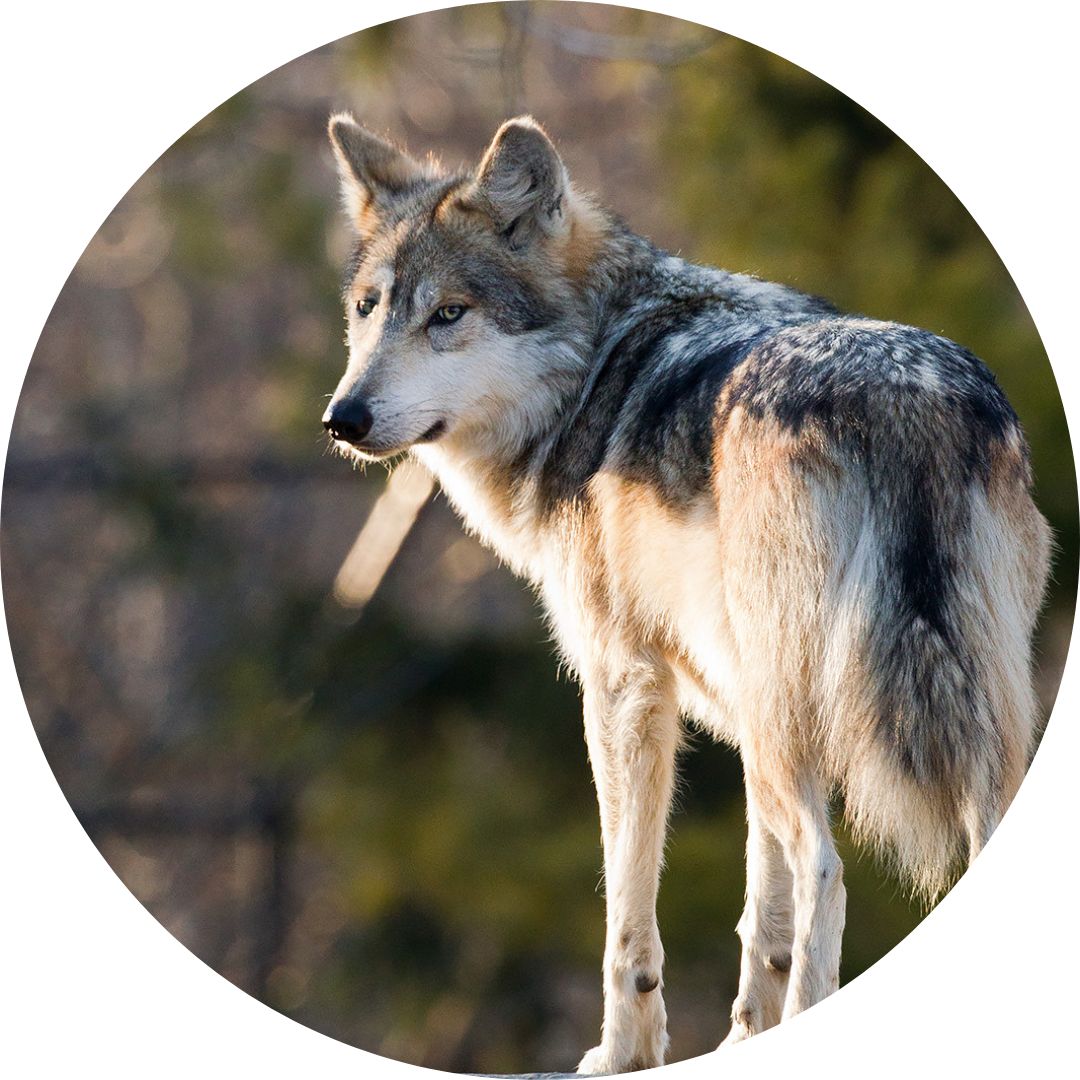
While there have been many arguments against recognizing the Mexican gray wolf (Canis lupus baileyi) as a subspecies of the gray wolf, genetic analyses demonstrate that the Mexican gray wolf is a valid subspecies, and is, in fact, the most genetically distinct subspecies of gray wolf in North America (National Academies of Sciences, 2019). Compared to gray wolves, Mexican gray wolves are distinctly smaller (National Academies of Sciences, 2019). Researchers hypothesize that Mexican gray wolves evolved these smaller body sizes due to the climate of their range in Mexico and in the Southwestern US, as well as smaller prey sizes (Parsons, 2018).
Historically, Mexican gray wolves could be found throughout southwestern Texas, southern New Mexico, as far south as central Mexico, and as far north as southern Utah and Colorado (Parsons 1999; USFWS, Mexican gray wolf, 6). However, extensive habitat loss and deliberate extermination by settlers combined with reckless predator eradication programs in the early 1900s caused the extinction of Mexican gray wolves in the wild (Parsons 1999, 2018; Wolf Conservation Center). Populations in Mexico would reach the same fate by the 1980s (Parsons, 1999).
Learn more about the Mexican gray wolf here…
Photo: Wolf by Rune Jensen via Creative Commons
The gray wolf (Canis lupus) also known as the timber wolf, or western wolf, is a canid native to the wilderness and remote areas of North America and is the largest member of its family, with males averaging 95–99 lb and females 79–85 lb. It is distinguished by its larger size and less pointed features, particularly on the ears and muzzle. Its winter fur is long and bushy, and predominantly a mottled gray in color, although nearly pure white, red, or brown to black also occur.
The closest relative of the wolf is the domestic dog, with which it shared a common European ancestor. A social animal the wolf is an apex predator with only humans posing a serious threat to it. It feeds primarily on large animals, like deer, though it also eats smaller animals, livestock, carrion, and garbage.
The wolf has a long history of association with humans, having been despised and hunted in pastoral communities due to its attacks on livestock. Although the fear of wolves is pervasive in many human societies, attacks on humans are rare as wolves live away from people, and have been taught to fear humans by hunters and shepherds.
Learn more about the wolf here…
Photo: Wolf by Rune Jensen via Creative Commons



